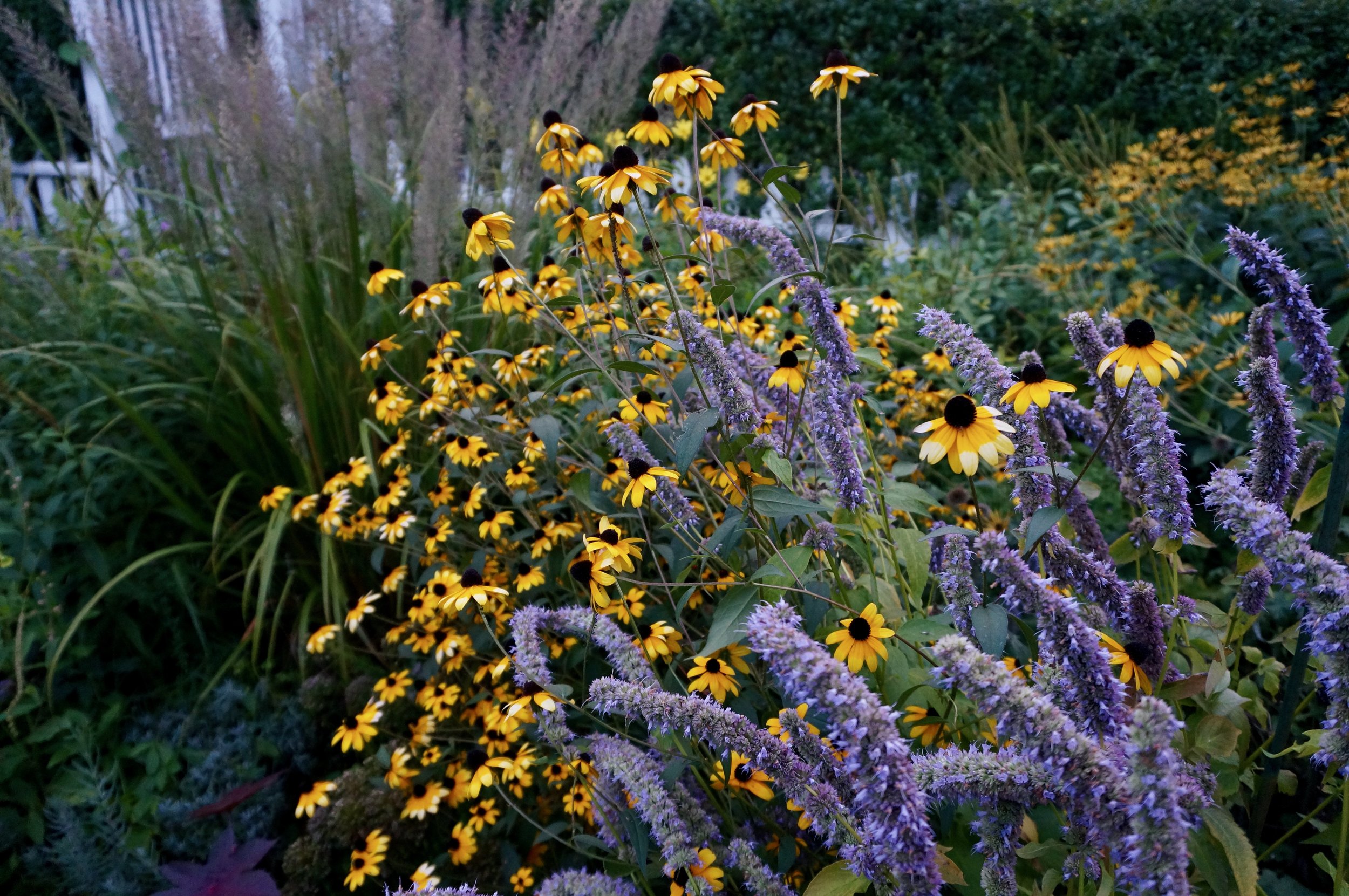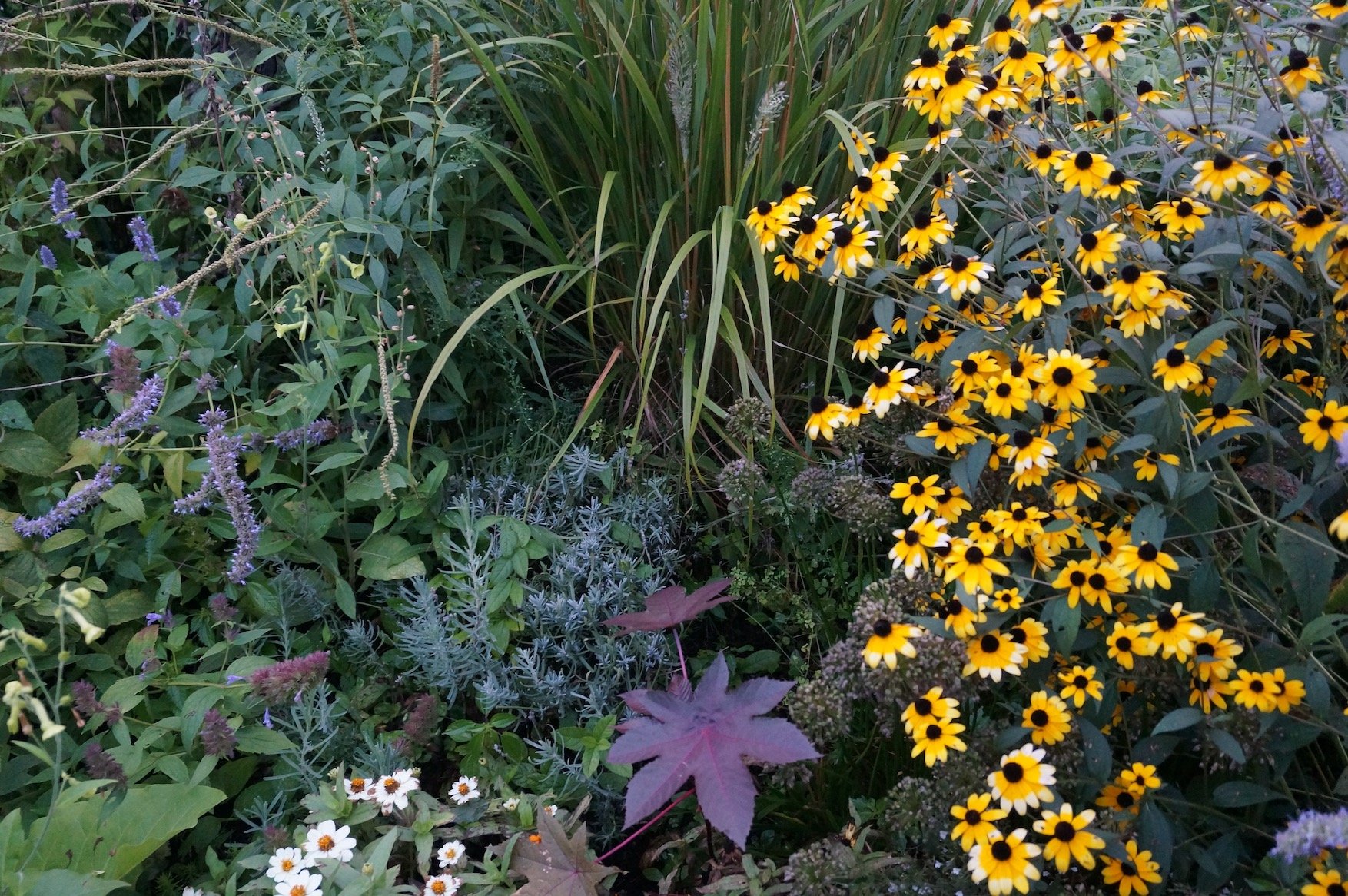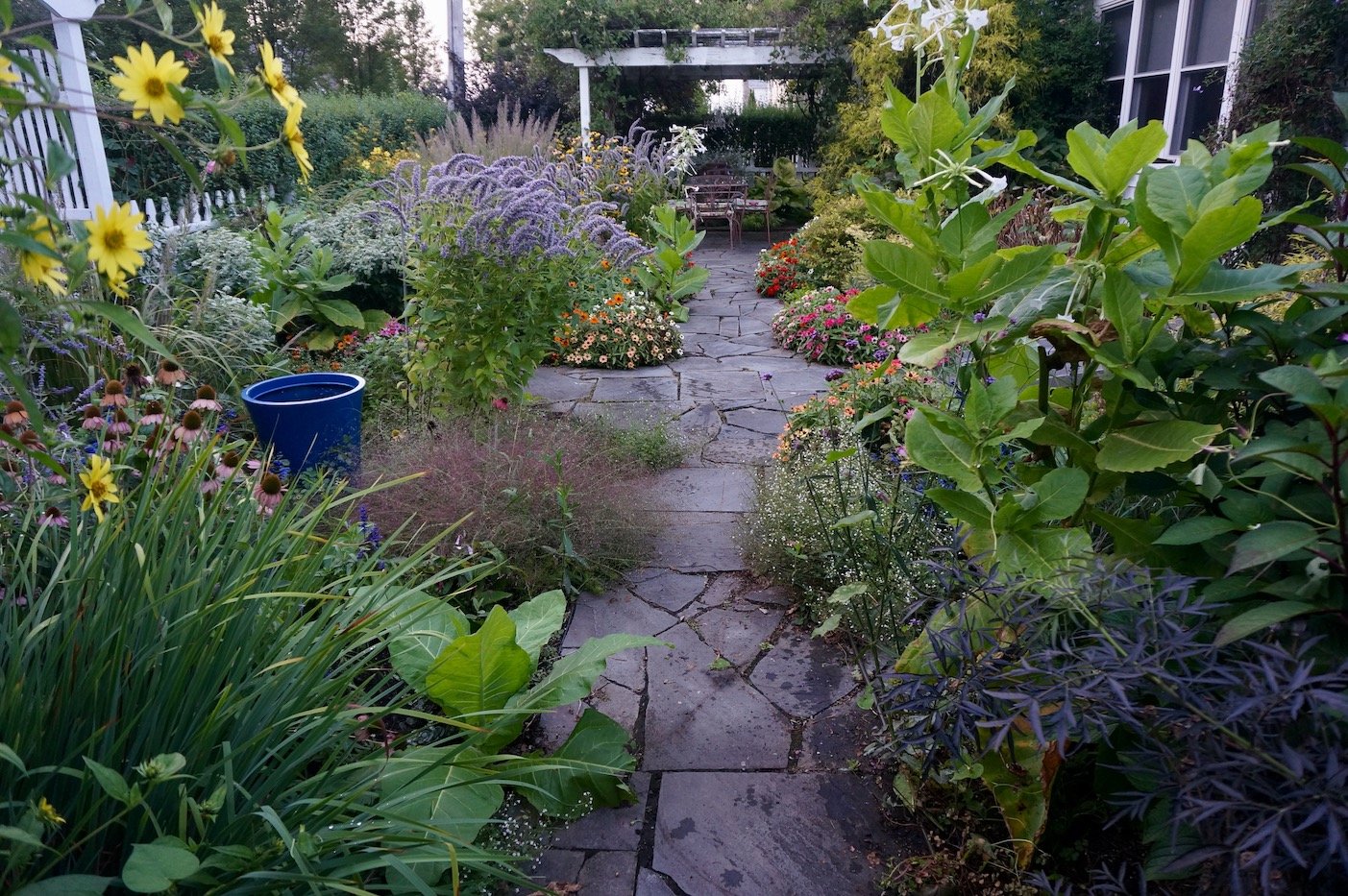Pollinators For Pleasure: 7 Perennials To Make Your Garden Buzz
Originally, my front garden was designed with the usual principles in mind: symmetry, color, texture, and shape. It was neat and pretty, but after a while, I realized it was missing something. When the boxwood hedges succumbed to blight a couple of years ago, I took the opportunity to rethink my approach, loosen up my gardening style and add more native perennials to attract pollinating insects.
Little did I know that this decision would turn my garden into an unexpected source of entertainment. Sitting outside or watching from my window is like having front-row seats to a captivating show. The garden hums with life — bees, butterflies, and hummingbirds flit and buzz from flower to flower, and the scene changes every time I walk into a different section.
Honestly, words fail me - check out the video below.
Planting for pollinators creates a new kind of beauty, one that’s deeper than aesthetics. It’s more about connection, purpose, and the pleasure of watching nature in action. I had never imagined a garden could be so entertaining, but it truly is.
Want to transform your garden into a lively oasis for pollinators? Keep reading as I introduce seven key players that have turned mine into a vibrant, buzzing symphony.
1. Agastache 'Blue Fortune' and Rudbeckia hirta
Agastache 'Blue Fortune' (Hyssop) is like a bee condominium on steroids. Fat bumble bees flit and feast drunkenly on its fuzzy blue spires from June until late September. Even the seed heads buzz with activity. My grandson likes to pet the bees, but they don't seem to mind a bit - they're too busy chowing down on the nectar. This is a tough perennial that checks all the boxes, long-lasting flowers, good foliage and easy to grow. It ranks high on the list of entertaining plants.
Rudbeckia hirta, (commonly known as Blackeyed Susan) is an annual, biennial or a short-lived native perennial depending on conditions. Mine is growing in dry soil and reseeds. It’s a late bloomer (August-Sept) that I look forward to. It’s a little floppy but I like the way the happy yellow flowers meander happily through the surrounding perennials. It gets a lot of action from the butterflies and bees - nectar from the flowers provides nourishment for them, seeds provide food for granivorous birds.
The above photo features one of my most satisfying combinations - all at their peak in early July. It’s an entertaining composition of shapes, colors, textures and action. Monarda fistulosa 'Claire Grace' (Bergamot) is a lively butterfly and bee magnet. Not surprising they love it - flashy pink flowers, sturdy stems and fragrant foliage provides habitat to bees, butterflies, moths, and hummingbirds as well as some specialist insects. When you brush up against it, the leaves emit a subtle spicy aroma that’s intoxicating.
Although a variety of bees and butterflies are attracted to it, the armies of Scollid wasps that crawl all over Pycnantheum muticum (aka Mountain Mint) are most fascinating to observe. These wasps are useful - considered parasites because they paralyze prey for their larvae of scarab beetles to feed on after hatching. Adult females will dig into the ground to find a beetle grub before stinging it and laying her eggs. The flowers are kind of insignificant but the gray foliage is striking. And it smells like mint.
A variety of bees crawl up and down the long thin spires of Veronicastrum virginicum (in the background, aka Culvers Root). The most common are long and short tongued bees that collect pollen and nectar. This is a perennial of great stature - about 5-6 feet high with candelabra-like white spires. I leave it standing over the winter because the seedheads are so interesting. One caveat - it flops in the dryish soil of my garden (prefers moisture). I stake it if I get a chance or chop it down by half in late May to keep it from getting so tall. However, I must admit that the shortened version looses part of it’s charm.
Eragrostis spectabilis aka Purple Love Grass is a robust native grass I acquired this summer at The Plantsmen Nursery. I haven’t seen a lot of insect action yet, but I’m sure they’ll come. I’ve read that it is popular with insect herbivores such as leafhoppers. Birds like to use the dry panicles for nesting. I’m entertained by the texture and movement it adds.
I’d be remiss if I didn’t mention Profusion Zinnias - added for extra summer color. These turned out to be another unexpected pleasure. Just the right height for a border (2 ft) - tidy, tough and vibrant. Although these are not native plants, they provide a nectar source for fall pollinators. The flat flower surface gives butterflies a place to hang out on and bees can reach pollen easily.
I used to think about plants in terms of design and aesthetics. But now, I can’t believe I never considered choosing plants for their entertainment value. Planting for pollinators isn’t just about supporting nature; it’s also about creating a space that’s full of activity and life. Each plant brings its own drama to the stage, and I find myself spending more time simply watching and listening. If you want to go beyond just pretty blooms, I encourage you to try it.







